Pro-crypto policy promotes the U.S. stock RWA narrative, interpreting the opportunities and challenges of tokenized stocks

Reprinted from panewslab
05/08/2025·22DAbstract: As Trump's policies are being implemented one by one, attracting manufacturing backflow through tariffs, actively triggering the stock market bubble, forcing the Federal Reserve to cut interest rates and release money, and then promoting financial innovation to accelerate industrial development through deregulatory policies, this combination of punches is truly changing the market. Among them, the RWA track, which is favorable to regulatory policies, is also increasingly attracting attention from the crypto industry. This article mainly introduces the opportunities and challenges of tokenized stocks.
Review the development history of tokenized stocks
In fact, tokenized stocks are not a new concept. Since 2017, the attempt to STO has begun. The so-called STO (Security Token Offering) is a financing method in the cryptocurrency field. Its essence is to digitize and put the equity of traditional financial securities and tokenize assets through blockchain technology. It combines the compliance of traditional securities with the efficiency of blockchain technology. As an important securities category, tokenized stocks are the most concerned application scenario in the STO field.
Before the emergence of STO, the mainstream financing method in the blockchain field was ICO (Initial Coin Offering, initial token issuance). The rapid rise of ICOs mainly relies on the convenience of Ethereum smart contracts, but the tokens issued by most projects do not represent real asset rights and lack supervision, resulting in frequent fraud and runaways.
In 2017, the US SEC (SEC) issued a statement on the DAO incident, stating that certain tokens may be securities and should be regulated by the Securities Act of 1933. This is the starting point for the official sprouting of the STO concept. In 2018, STO became increasingly popular as a "compliant ICO" concept and began to attract industry attention. However, due to the lack of unified standards, poor liquidity in the secondary market, high compliance costs, etc., the market development is slow.
With the advent of DeFi Summer in 2020, some projects have begun to try to create derivatives linked to stock prices through smart contracts, allowing on-chain investors to directly invest in the traditional stock market without the need for complex KYC processes. This paradigm is often called the synthetic asset model, does not directly hold US stocks, and transactions do not require trust in centralized institutions, which can bypass expensive regulatory and legal costs. Representative projects include Mirror Protocol of Synthetix and Terra ecosystems.
In these projects, market makers can provide over-cryptocurrency collateral, mint U.S. stocks and provide market liquidity, while traders can directly trade these targets through the secondary market in DEX to obtain price exposure to anchored stocks. I still remember that the stock in the US stock market was still Tesla, not Nvidia in the previous cycle. Therefore, most projects slogans have set a selling point of trading TSLA directly on-chain.
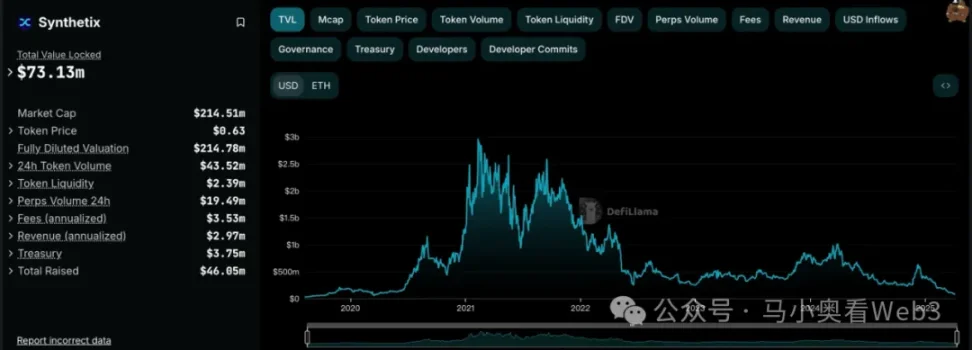
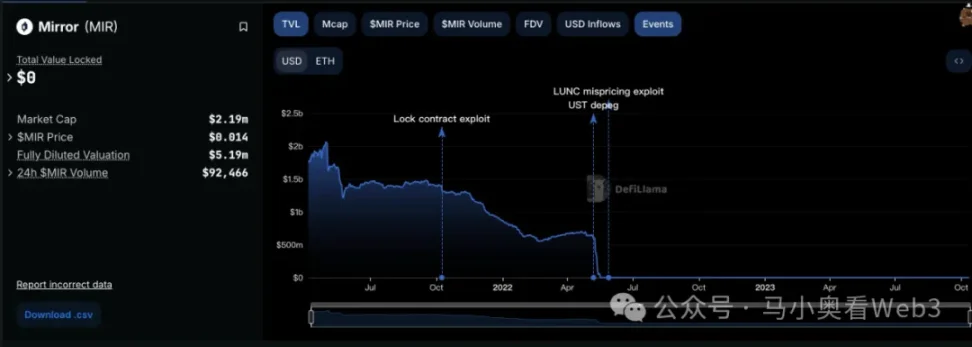
However, from the final market development, the trading volume of on-chain synthetic US stocks has been unsatisfactory. Taking sTSLA on Synthetix as an example, including the casting and redemption of the primary market, the total cumulative on-chain Transactions is only 798 times. Then most projects claimed that due to regulatory considerations, the US stock synthetic assets were removed from the shelves and turned to other business scenarios. However, the essential reason is that it is impossible to establish a sustainable business model because the logic of synthetic assets is established. The premise of the establishment of the synthetic asset business logic is that there is a large demand for on-chain transactions, which attracts market makers to mint assets through the primary market and make markets in the secondary market to earn handling fees. If there is no such demand, market makers will not only be unable to obtain returns through synthetic assets, but also have to bear the risk exposure brought by synthetic assets, and shorting anchors the risk exposure of US stocks, so liquidity will further shrink.
In addition to the synthetic asset model, some well-known CEXs are also trying to bring Crypto traders the ability to trade US stocks through the centralized custody model. This model is escrowed by a third-party financial institution or exchange and creates a tradable subject matter directly in the CEX. The typical ones are FTX and Binance. FTX launched a tokenized stock trading service on October 29, 2020, in partnership with German financial company CM-Equity AG and Switzerland's Digital Assets AG, allowing users in non-US and restricted areas to trade tokens pegged to stocks of US listed companies such as Facebook, Netflix, Tesla, Amazon, etc. In April 2021, Binance also began to provide tokenized stock trading services, and the first stock to go online was Tesla (TSLA).
However, the regulatory environment at that time was not particularly friendly, and the core initiator was CEX, which meant that it formed a direct competitive relationship with traditional stock trading platforms, such as Nasdaq, and naturally suffered a lot of pressure. FTX's tokenized stock trading volume reached an all-time high in the fourth quarter of 2021. Among them, the trading volume in October 2021 was US$94 million, but its tokenized stock trading service was stopped after bankruptcy in November 2022. Binance announced in July 2021 that it had stopped its tokenized stock trading services only three months after it started the business, and due to regulatory pressure.
Since then, as the market entered a bear market, the development of the track has once fallen into a state of stagnation. Until Trump's election, his deregulated financial policies brought about a change in the regulatory environment and re-attracted the market's attention to tokenized stocks, but at this time it had a new name, RWA. This paradigm emphasizes that through compliant architectural design, the introduction of qualified issuers to issue tokens guaranteed by real-world assets 1:1 on-chain, and the creation, transaction, redemption, and management of the tokens are strictly implemented in accordance with regulatory requirements.
Current market status of stock RWA
So next let’s introduce the current market status of stock RWA. In general, the market is still in its early stages and is still dominated by U.S. stocks. According to RWA.xyz, the current stock RWA market has a total issuance of $445.40M, but it is worth noting that the issuance of $429.84M is attributed to an on-chain stock issued by Exodus Movement, Inc., a software company focused on the development of self-custodial cryptocurrency wallets. The company was founded in 2015 and is headquartered in Nebraska, USA. The company's shares are listed on the New York Stock Exchange (NYSE America) and allow users to migrate their ordinary Class A shares to the Algorand blockchain to manage. Users can directly view the prices of this part of the chain assets on Exodus Wallet. The company's current total market value is $1.5B.
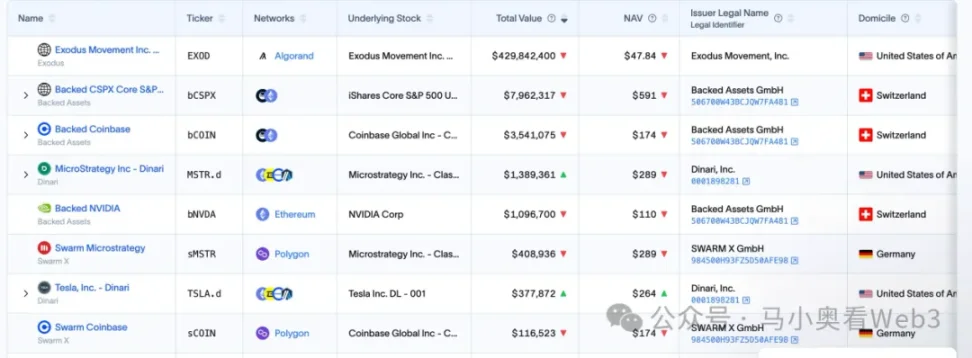
The company has also become the only company in the United States to tokenize its common stock on blockchain. But it is worth noting that on-chain EXOD is just an on-chain digital identifier of its stock and does not include voting, governance, economics or other rights. At the same time, the token cannot be traded and circulated directly on-chain.
This incident has certain iconic significance and marks a significant change in the SEC's attitude towards on-chain stock assets. In fact, Exodus' attempt to issue stocks on-chain was not smooth. In May 2024, Exodus submitted an application for the first time to tokenization of common stocks, but because the SEC regulatory policy did not turn at that time, the plan to go on the chain was initially rejected. But then in December 2024, after continuous improvement of technical solutions, compliance measures and information disclosure, Exodus finally obtained SEC approval and successfully completed the tokenization of common stocks. This incident also made the company's stock sought after in the market, with prices reaching all-time highs.
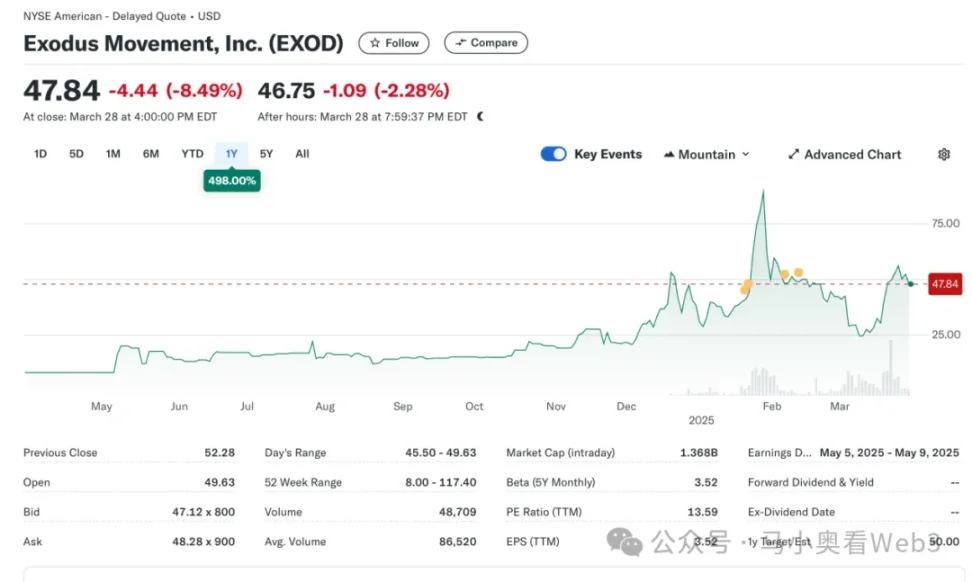
In addition, the remaining market share of about $16M is mainly attributed to a project called Backed Finance. This is a Swiss company that allows users who meet KYC requirements to pay for USDC minting on-chain stock tokens through its official primary market. Backed exchanges for USD after receiving crypto assets and purchases COIN stocks in the secondary market (there may be some delays due to the opening time of the stock market). After the purchase is successful, the stock is managed by a Swiss custodian bank and sent to the user 1:1 mint bSTOCK token. The redemption process is the opposite. Reserve Asset Security Guarantee is a regular release of reserve certificates with an auditing company called Network Firm. On-chain investors can purchase such on-chain stock assets directly through DEXs such as Balancer. In addition, Backed does not provide ownership or any other additional rights to the underlying assets, including voting rights, to hold stock tokens. And only users who pass KYC can redeem USDC through the primary market.
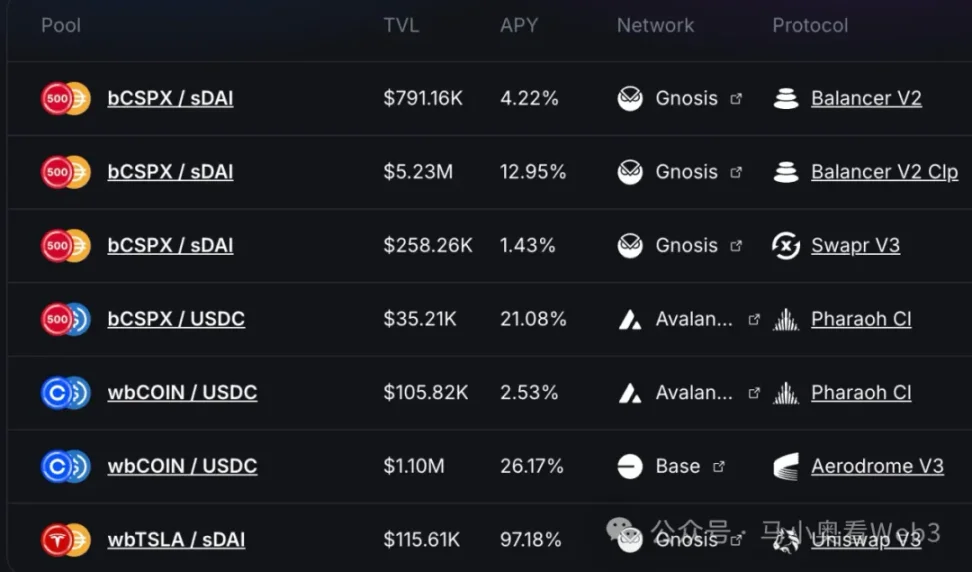
In terms of issuance, Backed's adoption is mainly concentrated on two assets: CSPX and COIN, with the former being about $10M and the latter being about $3M. In terms of on-chain liquidity, it is mainly concentrated on the two chains, Gnosis and Base, where bCSPX has liquidity of about $6M and wbCOIN has liquidity of about $1M. In terms of transaction volume, it is not very high. Taking bCSPX's largest liquidity pool as an example, since its deployment on February 21, 2025, the cumulative transaction volume has been about $3.8M, and the cumulative number of Transactions has been about 400 times.
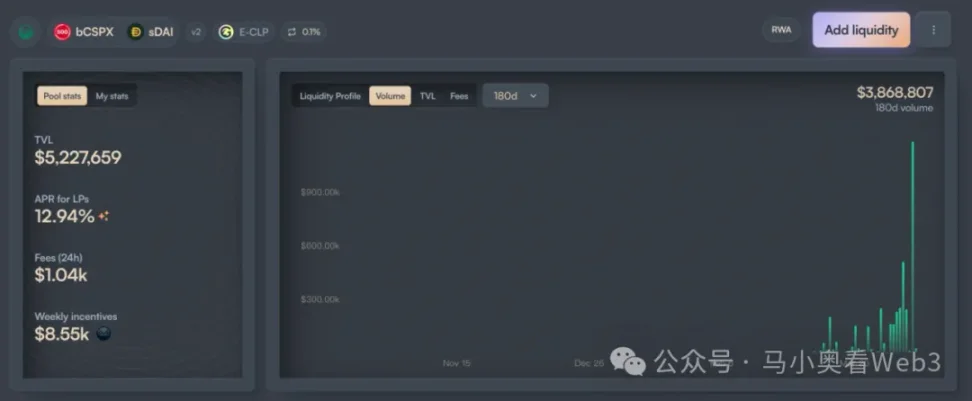
Another trend worth noting is the progress of Ondo Finance, which, as Ondo announced its overall Ondo chain and Ondo Global Markets strategy on February 6, 2025, tokenized stocks are the core trading targets in its Ondo Global Markets. Perhaps Ondo, with a wider range of TradFi resources and a better technical background, can accelerate the development of this track, but it still needs to be observed.
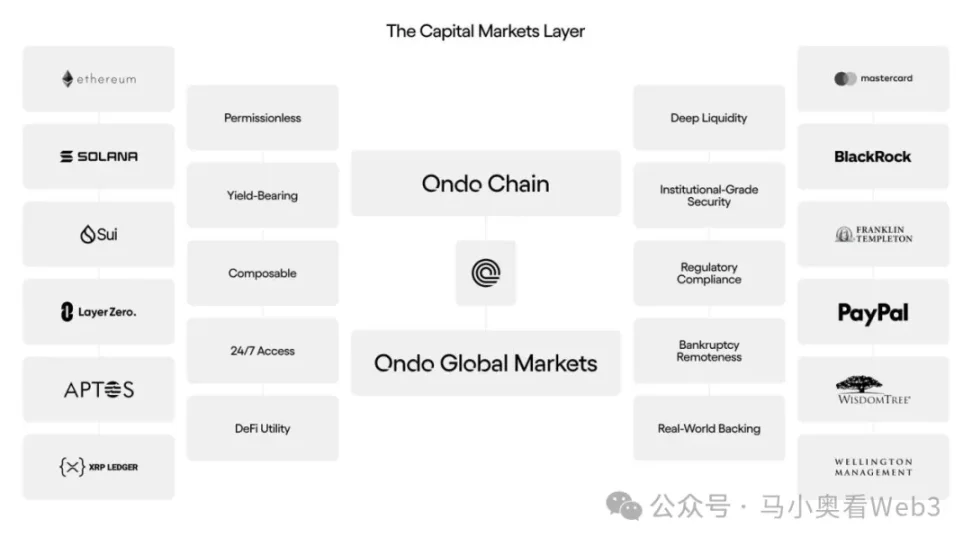
Opportunities and challenges of stock RWA
Next, let’s discuss the opportunities and challenges of stock RWA. Generally speaking, the market believes that stock RWA has the following three advantages:
- 7-24-hour trading platform: Due to the technical characteristics of blockchain, it has the characteristics of running around the clock. This allows tokenized stock trading to get rid of the trading time limits of traditional exchanges and fully taps into potential trading needs. Take Nasdaq as an example. Although the ability to achieve 24-hour trading services has been achieved by extending pre- and after-market trading, the regular trading time is also limited to mid-week. If the trading platform is directly developed through blockchain, all-weather transactions will be achieved at a lower cost.
- Low-cost acquisition of US assets by non-US users: With the large-scale adoption of payment stablecoins, for non-US users, stablecoins can be used to trade US assets directly without the need to bear the handling fee costs and time costs caused by funds cross-border and cross-bank. Suppose a Chinese investor invests in US stocks through Tiger Securities, without considering the exchange fee, the cross-border remittance fee is about 0.1%. In addition, the settlement of cross-border remittance usually takes 1-3 working days. If transactions are conducted through on-chain channels, these two parts of the costs can be avoided.
- Financial innovation potential brought by composability: With its programmable characteristics, tokenized stocks will embrace the DeFi ecosystem, giving them stronger potential for on-chain financial innovation. For example, on-chain lending and other scenarios.
However, the author believes that the current tokenized stocks still face two uncertainties:
- Speed of regulatory policy advancement: According to the cases of EXOD and Backed, we can know that the current regulatory policy cannot solve the problem of "equal rights of stocks and coins", that is, purchasing tokenized stocks and physical stocks have the same rights at the legal level, such as governance rights. This limits many transaction scenarios, such as corporate mergers and acquisitions through the secondary market. Moreover, the compliance use scenarios for tokenized stocks are not yet clear, which has hindered the pace of financial innovation to a certain extent. Therefore, its progress is very dependent on the speed of regulatory policies. Considering that the current core policy goals of the Trump administration are still in the stage of manufacturing return, the timetable may continue to move backwards.
- Development of stablecoin adoption: From the perspective of past developments, the core target users of tokenized stocks are likely not crypto-native users, but traditional, non-US U.S. stock investors. For this group, it is also a question of whether the adoption of stablecoins is getting higher and higher, and this will be closely related to the stablecoin policies of other countries. For example, for Chinese investors, compared with the conventional official channel exchange, a premium of about 0.3% to 1% is required to obtain stablecoins through the OTC market, which is far higher than the cost of investing in US stocks through traditional channels.
Therefore, in summary, in the short term, the author believes that stock RWA has the following two market opportunities:
For listed companies, you can refer to the EXOD case to issue stock tokens on the chain. Although there are not many actual usage scenarios in the short term, at least the potential financial innovation capabilities can be investors willing to give the company a higher valuation. For example, for some companies that can provide on-chain asset management business, this method can transform the identity of investors into product users and transform the stocks held by investors into the AUM of the company, thereby enhancing the company's business growth potential.
For tokenized high-dividend U.S. stocks, some income DeFi protocols will become potential users. With the reversal of market sentiment, the yields of native real-return scenarios on most chains will drop significantly, while income-type DeFi protocols like Ethena need to constantly look for other real-return scenarios in order to improve overall yield and enhance market competitiveness. For details, refer to the example of Ethena configuring BUIDL. High dividend stocks usually belong to mature industries, with stable profit model and abundant cash flow, and can continuously distribute profits to shareholders. Most of them have the characteristics of low volatility and strong resistance to economic cycles, and their investment risks are also relatively controllable. Therefore, if some high-dividend blue-chip stocks can be launched, they may be adopted by a profit-based DeFi protocol.



 chaincatcher
chaincatcher